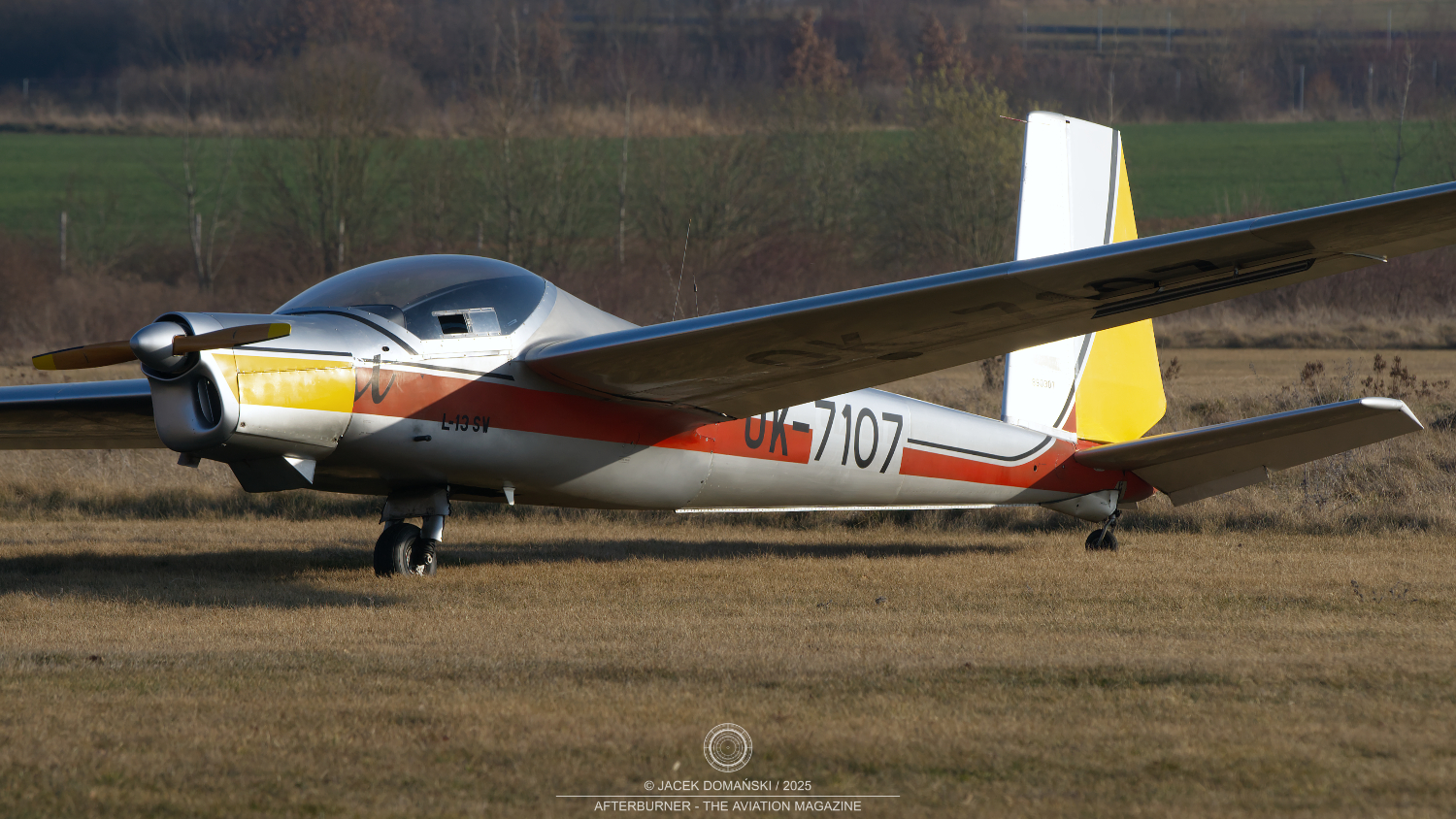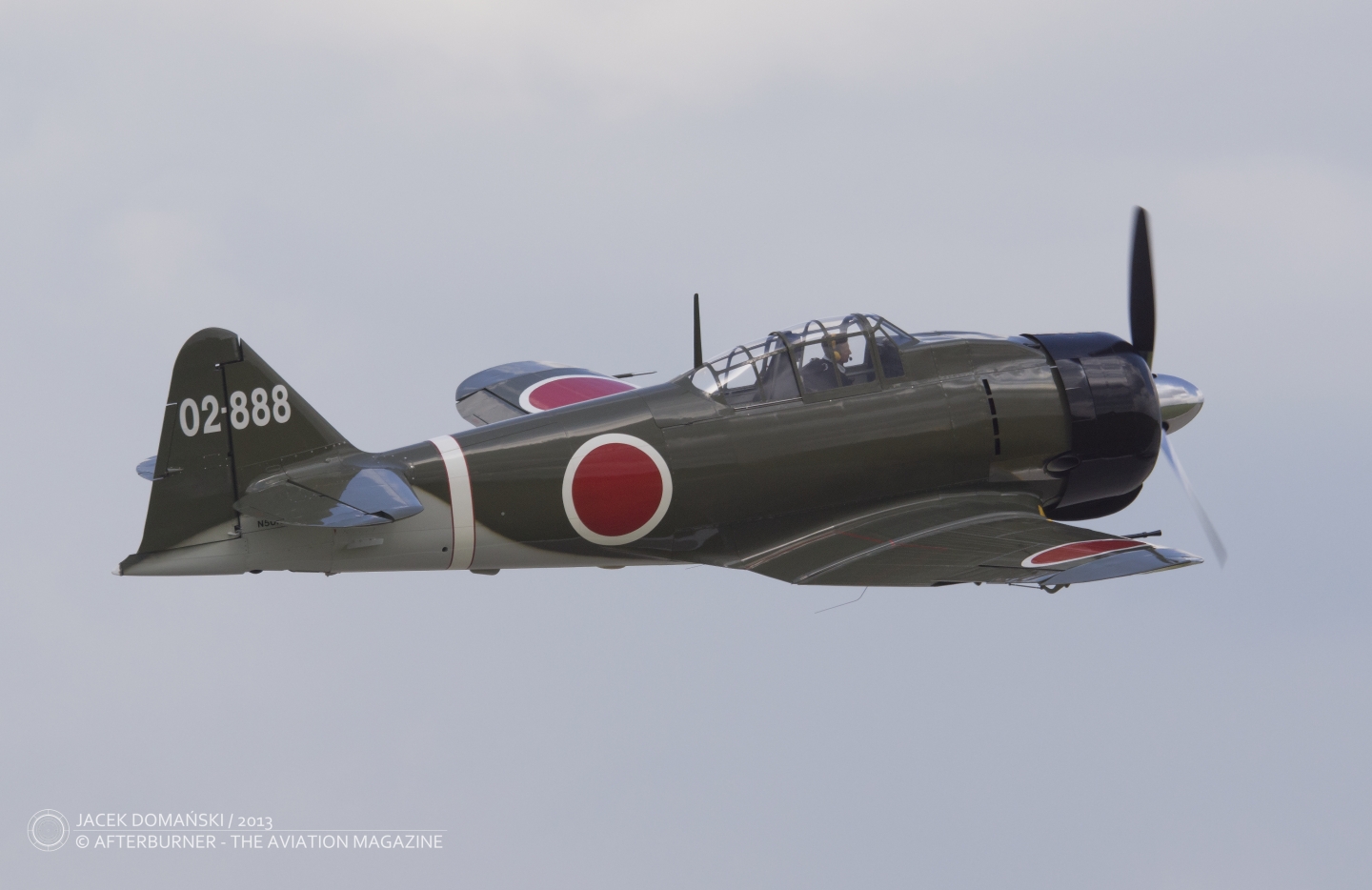 Aerotechnik L-13SW Vivat (c/n 890307, OK-7107, formerly OK-9100), exhibited on static display during this year´s first edition of Letiště Točná (Točná Airport) open day, Prague, March 2025.
Aerotechnik L-13SW Vivat (c/n 890307, OK-7107, formerly OK-9100), exhibited on static display during this year´s first edition of Letiště Točná (Točná Airport) open day, Prague, March 2025.
The L-13 Vivat motor glider is a derivative of the world-known Czechoslovak two-seat glider, L-13 Blaník. The initial concept of the aircraft, designated L-13W, was developed in the early 1970s, by LET Kunovice, the manufacturer of the aforementioned Blaník sailplane.
In 1976, the project of L-13 motor glider was given a financial boost from Svazarm paramilitary organisation (Svaz pro spolupráci s armádou – Union for Cooperation with the Army) and works on the prototype were assigned to Aerotechnik Kunovice. There, the aircraft was redesigned from high-wing to mid-wing configuration and its designation changed to L-13SW (with S standing for mid-wing / středoplošník).
On 10th May 1978, the prototype of L-13 successfully performed its maiden flight. At the end of that year, Svazarm organised an evaluation contest between the Vivat and M-17 Universal – another design of two-seat motor glider, developed in the early 1970s by Jiří Matějček. In the result of a series of flight trials, it was the L-13 that was approved for serial manufacturing.
Due to insufficient production capacities of Let Kunovice, production of the new motor glider was forwarded to Aerotechnik. The first serial manufactured Vivat was built in 1983 and officially delivered at the beginning of next year.
Construction of the L-13 Vivat is closely based on Blaník glider and use wings, tail surfaces and fuselage of the classic design. However, the cockpit of the motor glider was redesigned to accommodate two seats in side-by-side configuration. The Vivat was powered by single, nose-mounted four-cylinder Walter Mikron IIIS or IIIA engine, generating 65 hp.
Although initially Svazarm planned more than twenty examples of the L-13 Vivat to be manufactured per year, production of the motor glider was rather slow and suffered from several delays. Only about sixty examples of the SW variant were manufactured until the end of 1988. In the next year, the new, modernised version of the aircraft, designated SE (E for electric), was introduced into the market. It featured electric engine starter, automatic recharge of onboard radio station and new muffler.
In coming years, a few further variants of the aircraft were developed – such as SL (powered by Limbach engine), SEH (equipped with new Hoffman propeller) or SDM and SDL (equipped with fixed landing gear) – although they were not so popular as the two initial SW/SE models. Eventually, approximately 165 examples of the Vivat were made until the end of the 1990s, when production of the motor glider was officially ceased (although the last example of the aforementioned SDM version was completed in the early 2000s).
The L-13 Vivat was widely used in Czechoslovak, and then Czech and Slovak aeroclubs, although a few examples were sold abroad and operated in Finland, Poland, the United States and Australia.
Interesting fact is that the L-13 Vivat is one of the most controversial aircraft developed in the former Czechoslovakia. The motor glider is both loved and hated, still igniting fervent discussions about its construction and utility values.
Additionally, the Vivat is probably the aircraft with the highest number of nicknames given domestically. However, majority of them are the contemptuous ones, such as ´bastard´, ´the revenge of Svazarm´ or ´kick scooter´.



